Hey all! Real Farmer Jeff here.
Pruning tomato plants correctly can do wonders for your garden. It boosts your harvest, improves airflow around the plant, and helps prevent common diseases like blight and powdery mildew.
But before you start snipping away, it’s important to understand how tomato plants grow and why pruning is such an effective tool. Not all tomato plants benefit from pruning in the same way, and cutting too much or too little can affect your yield.
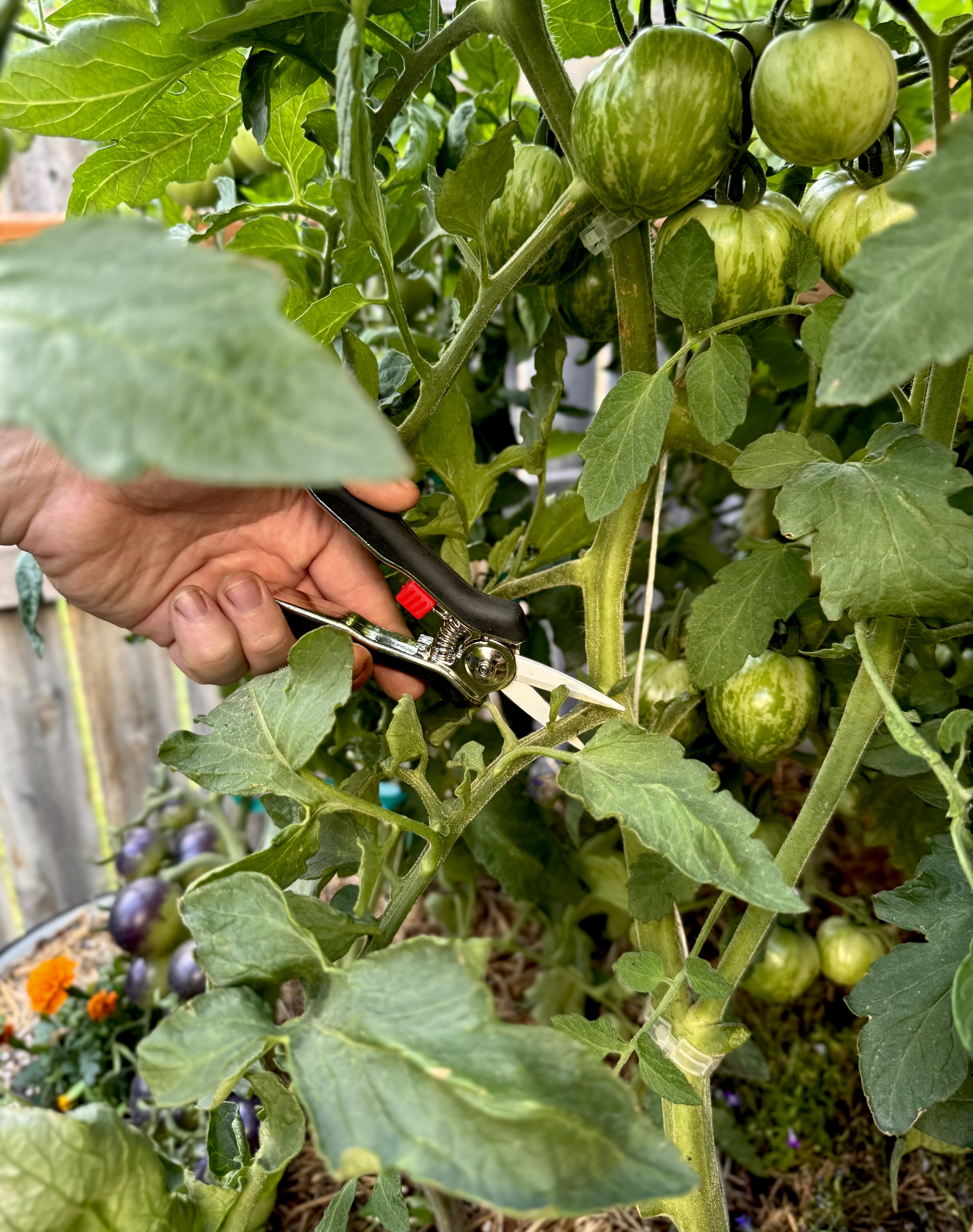
By learning the basics of plant structure and the different types of tomato varieties, you can make confident cuts that support healthier, more productive growth all season long.
In this guide, I will teach you all the ins and outs of pruning so that you can maximize your harvest. Let’s get started!
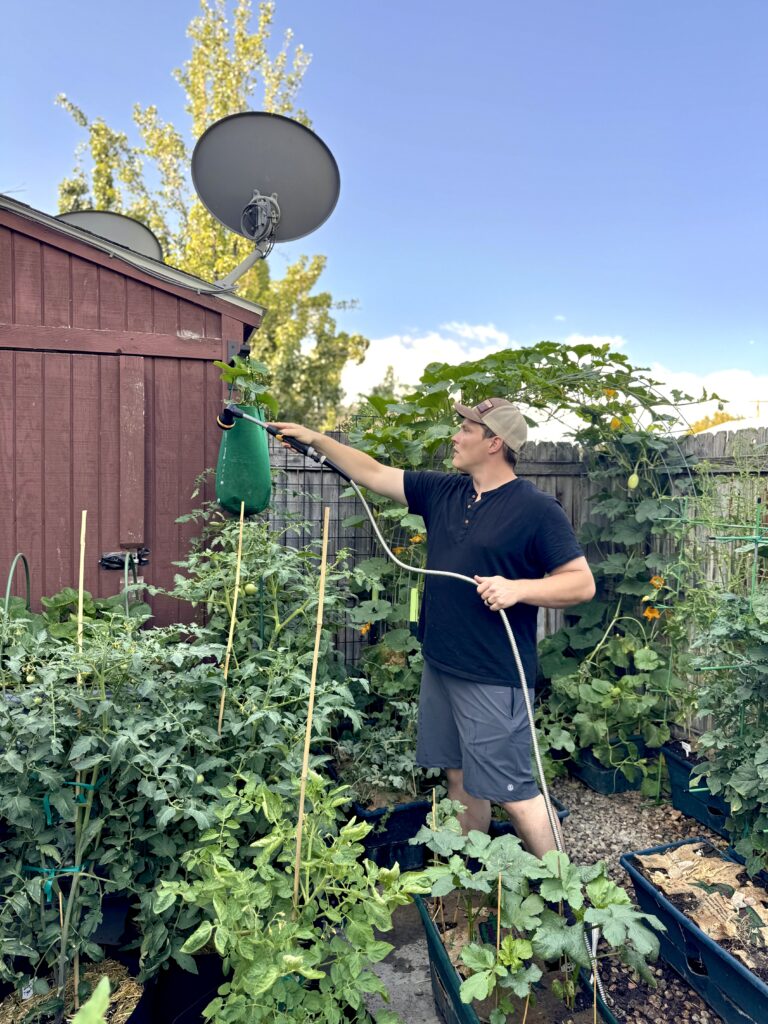
The Science Behind Pruning
Tomato plants create energy through photosynthesis, but their capacity to do so is limited by sunlight and leaf area. That finite amount of energy can either go into growing more leaves and stems, or into making fruit.
Pruning helps direct the plant’s energy where you want it: into producing more tomatoes. It also improves airflow, reduces disease, and allows sunlight to reach fruit-producing parts of the plant.
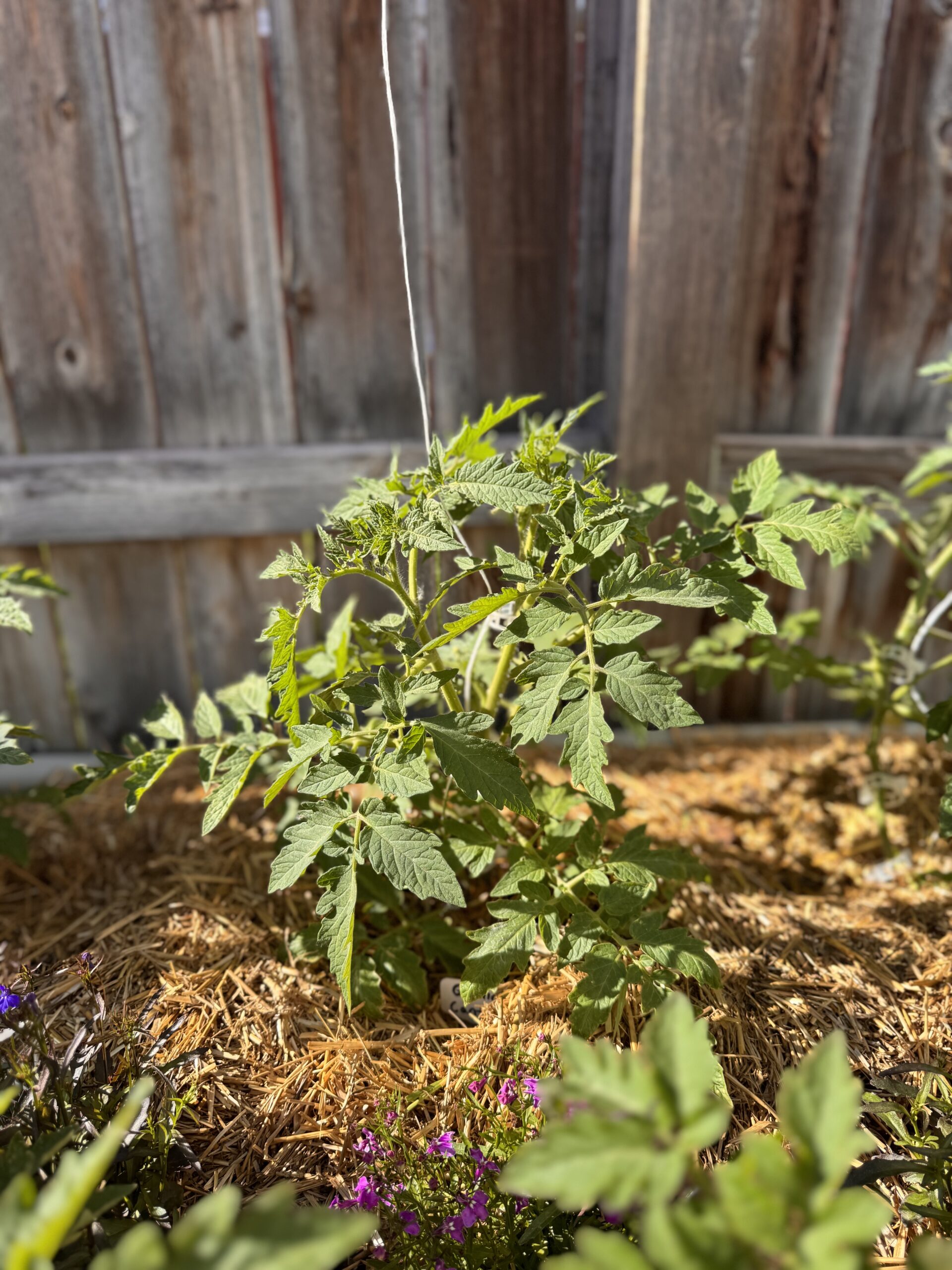
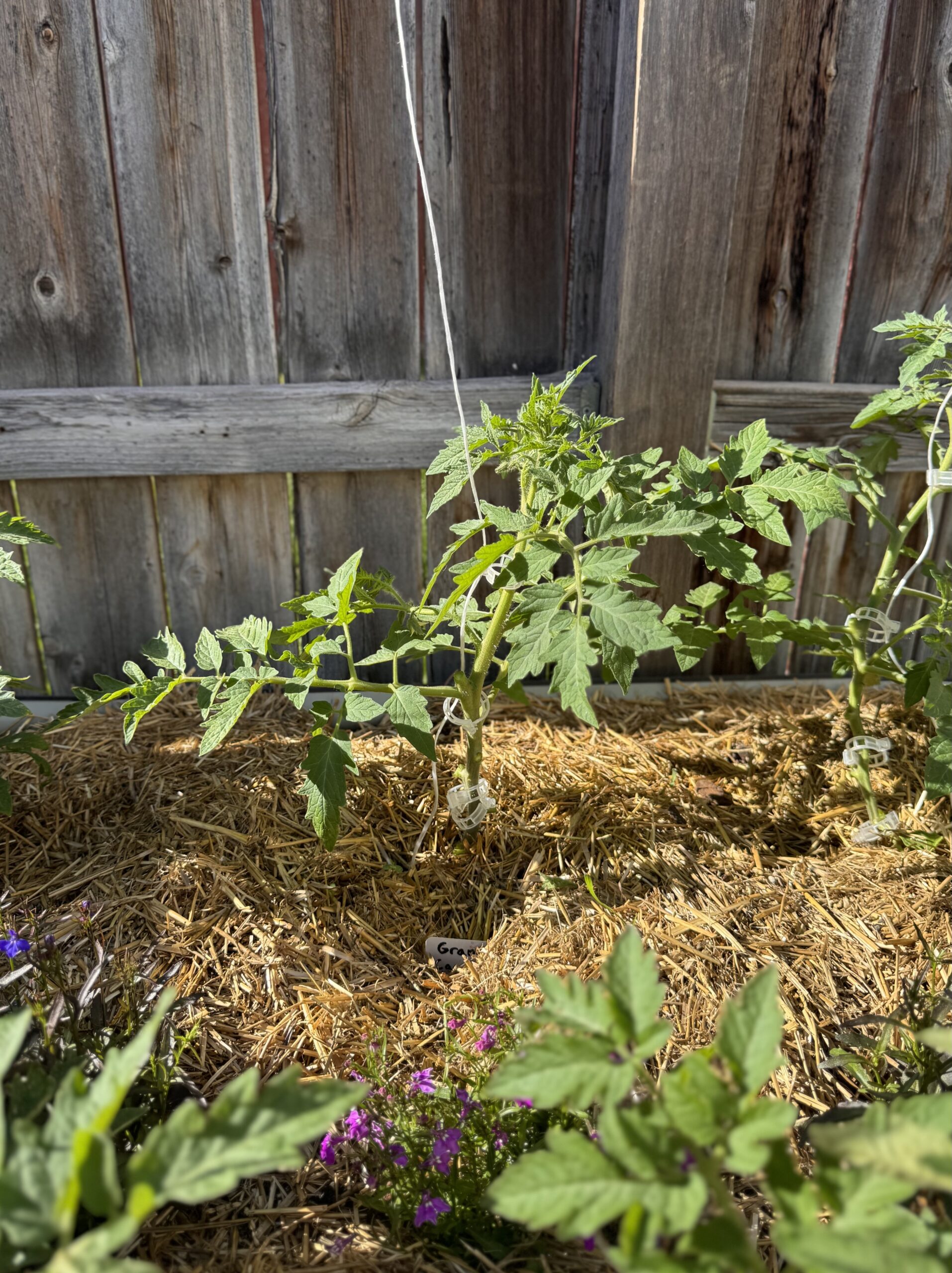
Basic Pruning Tips
- Avoid pruning during wet conditions to reduce disease spread.
- Mulch around the base of the plant to reduce soil splash and support healthier lower growth.
- Use clean, sharp pruning tools or your fingers.
- Don’t overdo it – while pruning improves growth and fruiting, removing too much at once can stress the plant. Aim to prune gradually and consistently rather than all at once.
Estimated Yields of Pruning
Note that pruning doesn’t mean aggressive cutting! Especially with determinate and dwarf varieties (if you are unfamiliar with what the various tomato varieties are, read on and I will explain below)! The goal is to strike a balance between plant health and maximizing the fruit-bearing potential within the plant’s natural limits. While yields vary by variety, location, and growing conditions, pruning can have a significant impact.
Here’s an estimate of the tomato yield (in pounds) for each variety, based on whether or not the plant is pruned:
| Tomato Type | No Pruning: Yield Per Plant | Pruning: Yield in Lbs. Per Plant |
|---|---|---|
| Indeterminate | ~10–15 lbs. | ~15–25 lbs. |
| Determinate | ~8–12 lbs. | ~10–14 lbs. |
| Dwarf | ~5–9 lbs. | ~7–11 lbs. |
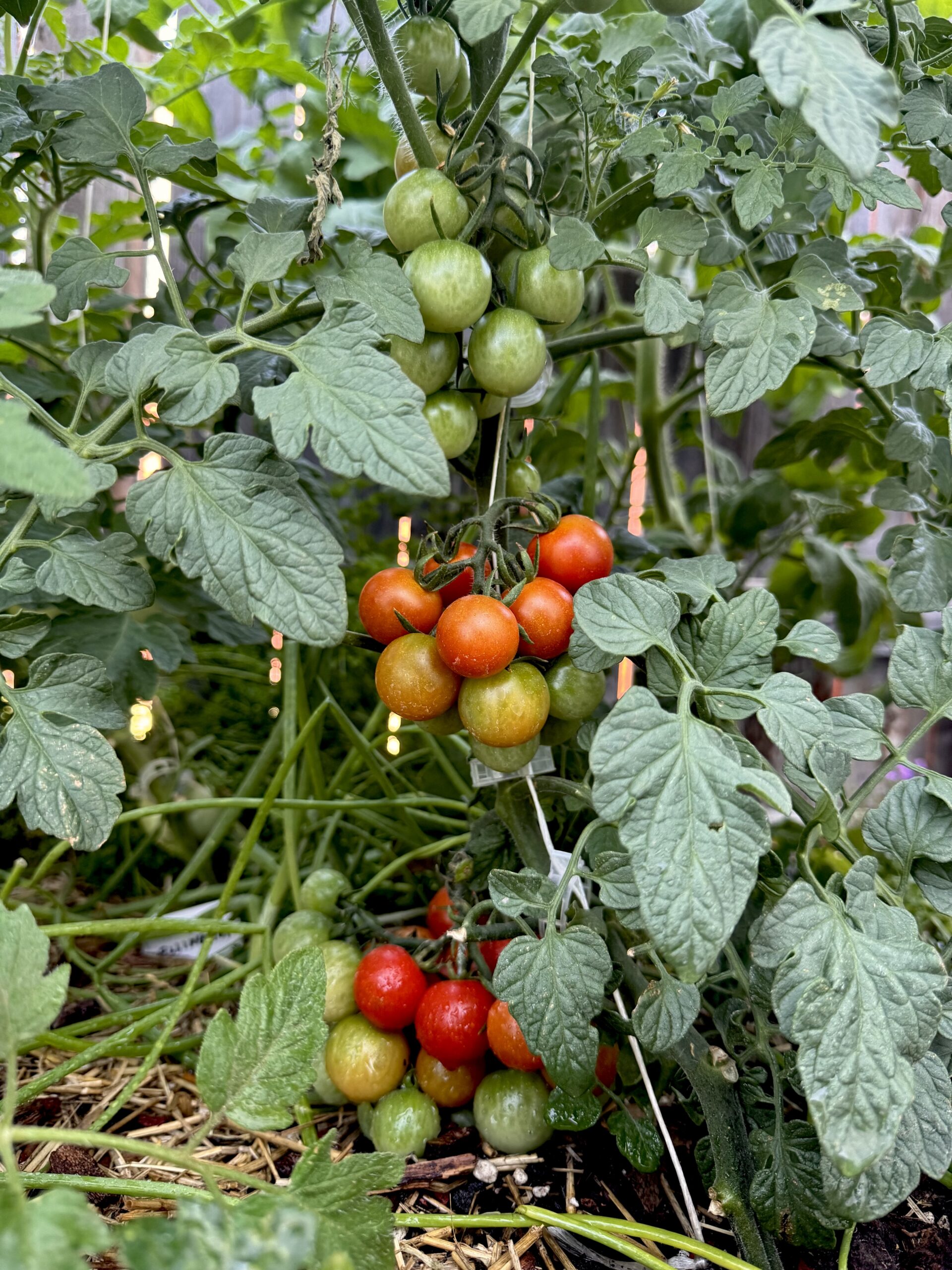
Sweet Million
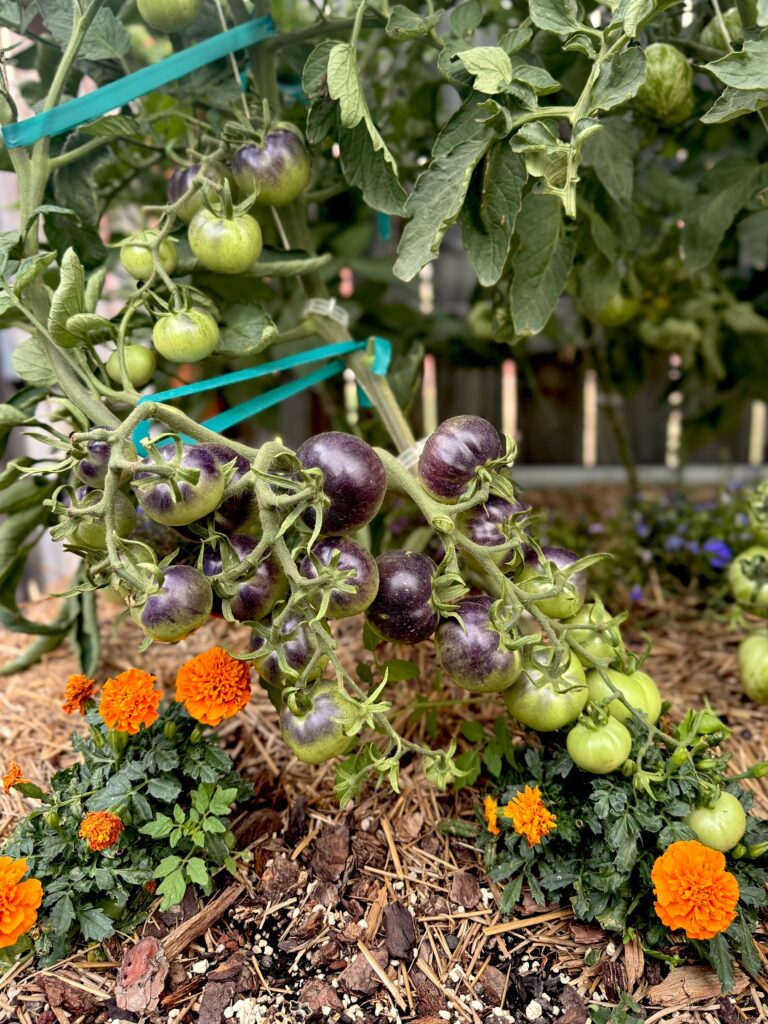
Night Saransk
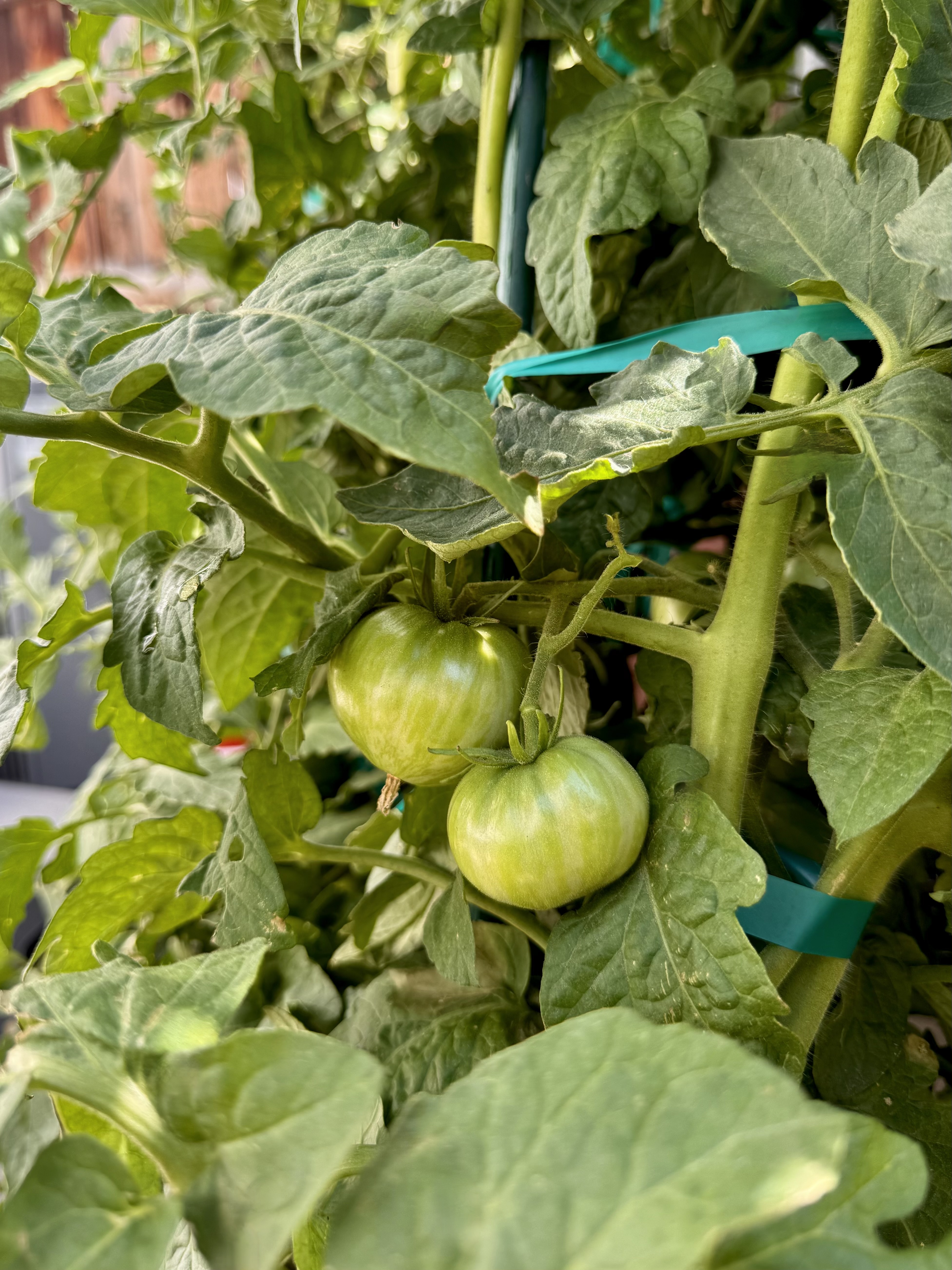
Fred’s Tie Dye
4 Basic Steps to Pruning
1. Know Your Tomato Type
Understanding your tomato’s growth habit helps you decide how much and where to prune:
- Indeterminate Varieties: These grow and produce fruit continuously throughout the season. They can grow quite tall (6–12 feet) and benefit most from structured pruning.
- Determinate Varieties: Also called bush tomatoes, they grow to a set height and ripen their fruit over a short period. These need only minimal pruning – too much can reduce yields! Because their height and fruiting potential are more fixed, over-pruning can significantly limit your harvest.
- Dwarf Varieties: Compact plants with thick stems and controlled height (often under 4 feet), ideal for containers or small spaces. They behave more like indeterminate types in fruiting, producing larger fruits like slicers and setting fruit gradually over the season rather than all at once. Like determinate varieties, their size is relatively fixed, so excessive pruning can reduce overall yield.
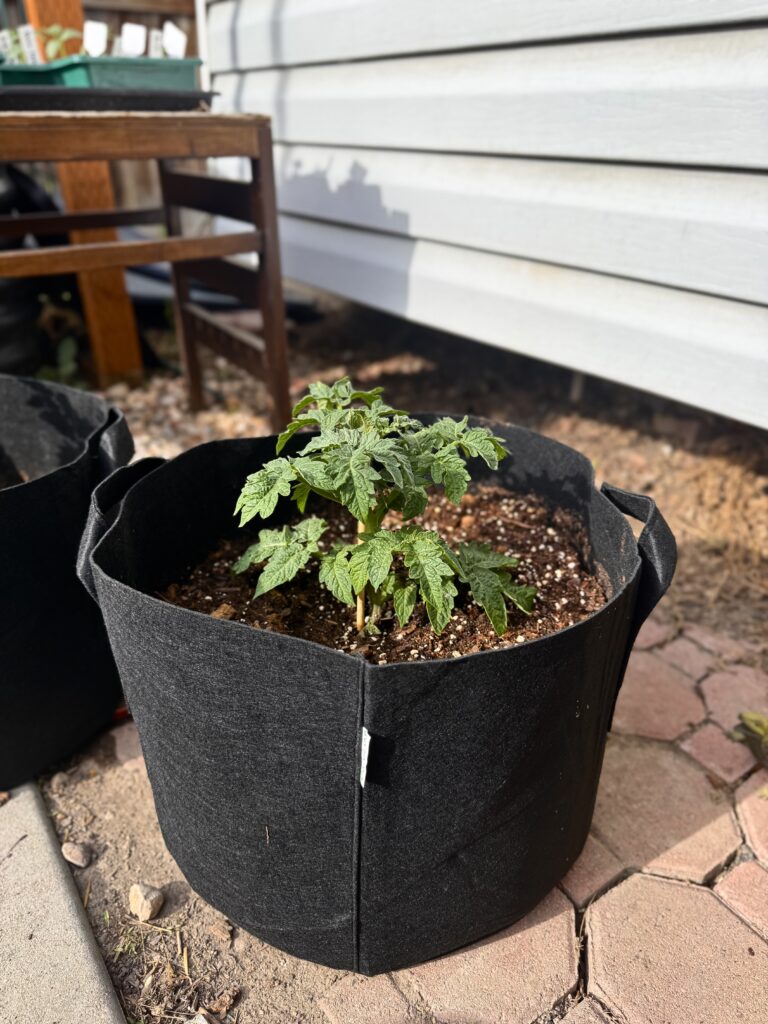

2. Prune the Lower Branches (All Varieties)
Once your tomato plant is well-established, begin removing the bottom 2 – 6 inches of branches gradually as it grows. The main goal is to keep leaves and stems from contacting the soil, which helps:
- Improve airflow around the base
- Reduce the chance of soil-borne diseases by minimizing contact between foliage and soil
- Direct energy into more productive upper growth
This step is universal and helps all tomato varieties, but the intensity varies:
- For indeterminate varieties, you can be more aggressive with lower pruning to support vertical growth.
- For determinate and dwarf varieties, prune conservatively. Just enough to keep foliage off the soil and allow airflow.
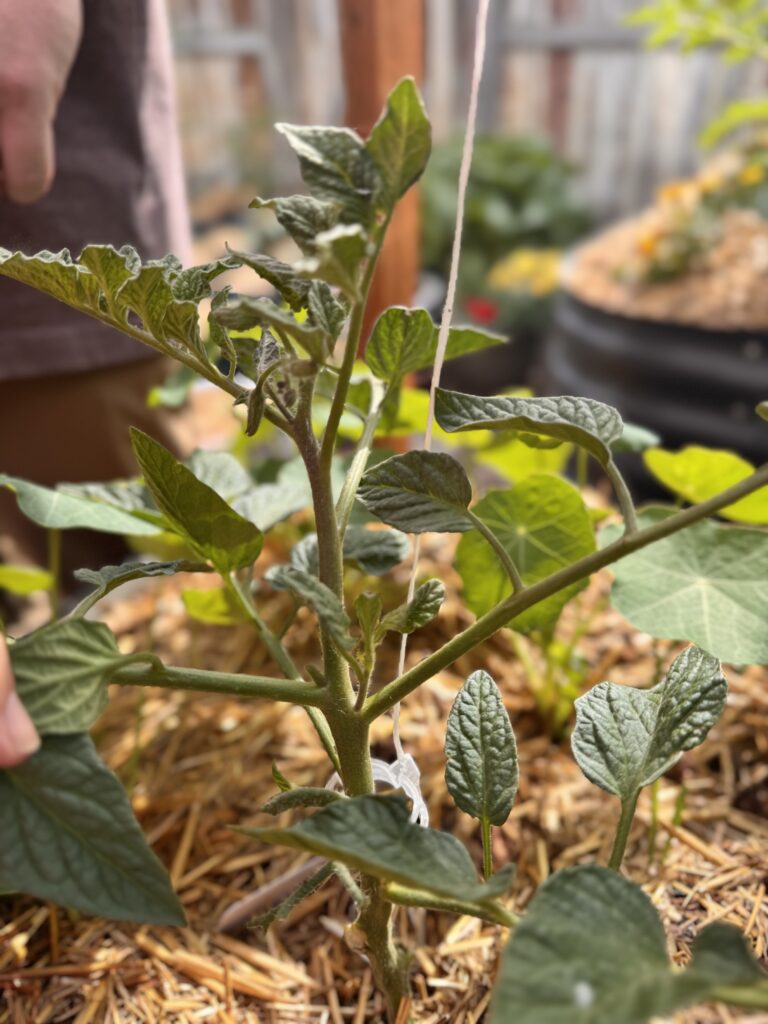
3. Pruning Strategy By Variety
Indeterminate Varieties:
- Remove suckers: Suckers are small shoots that emerge from the “armpit” or junction between the main stem and a leaf branch, typically growing at a 45-degree angle. These can quickly become new branches if left unchecked. Pinch or snip them off, especially in the lower part of the plant.
- Focus on upward growth: Guide the plant vertically by removing most suckers up to the first couple of feet.
- Top growth options: As the plant grows taller, you can allow more suckers to grow near the top. This encourages bushier growth and can lead to more fruit.
- Watch for disease: Remove any yellowing or diseased leaves as needed throughout the season.
Determinate Varieties:
- Let them bush out: Pruning suckers too aggressively can reduce overall yields. Because their height and number of flowering sites are limited, over-pruning can mean fewer tomatoes.
- Minimal pruning: Avoid heavy pruning since these plants are bred to grow a certain size and set fruit all at once.
- Stick to the basics: Only remove the lower leaves and any obviously diseased foliage.
Dwarf Varieties:
- Continuous producers: Since they fruit like indeterminates, you may see ongoing production throughout the season.
- Compact but productive: Despite their small size, they pack a punch in yield.
- Pruning approach:
- Remove lower leaves as the plant grows to improve airflow and reduce the risk of disease.
- Let the plant bush out naturally unless foliage becomes too dense or diseased.
- Some gardeners choose to remove suckers in very dense areas, but overall heavy pruning is unnecessary. Like determinate varieties, excessive pruning can limit fruit production due to their fixed structure.
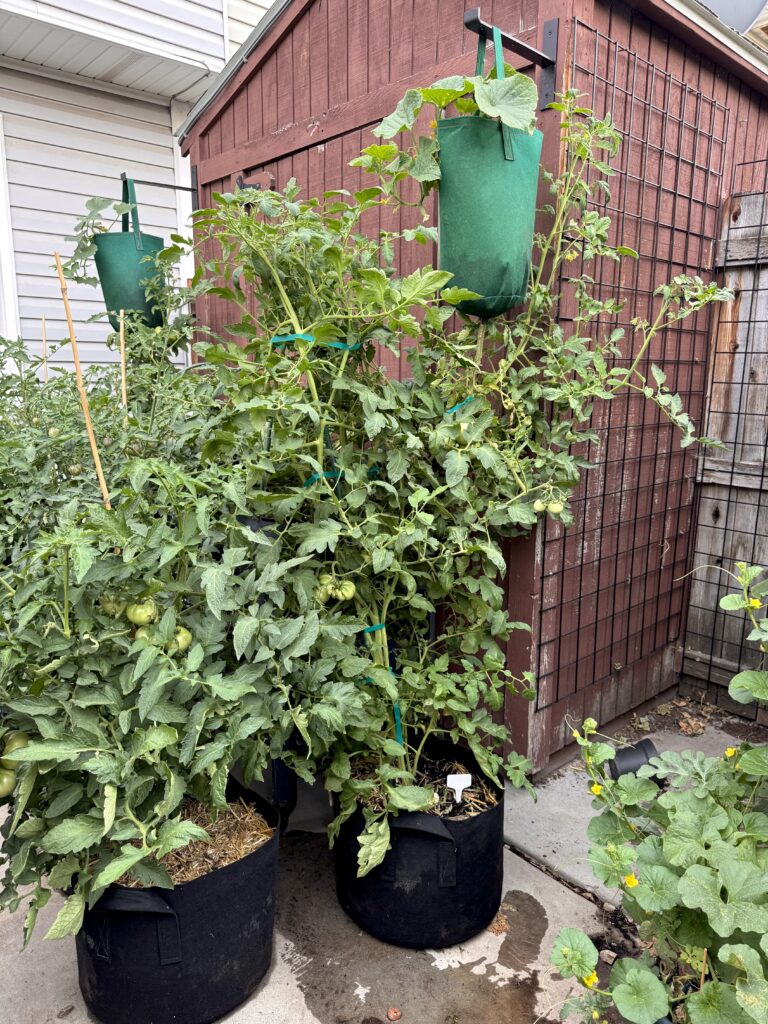
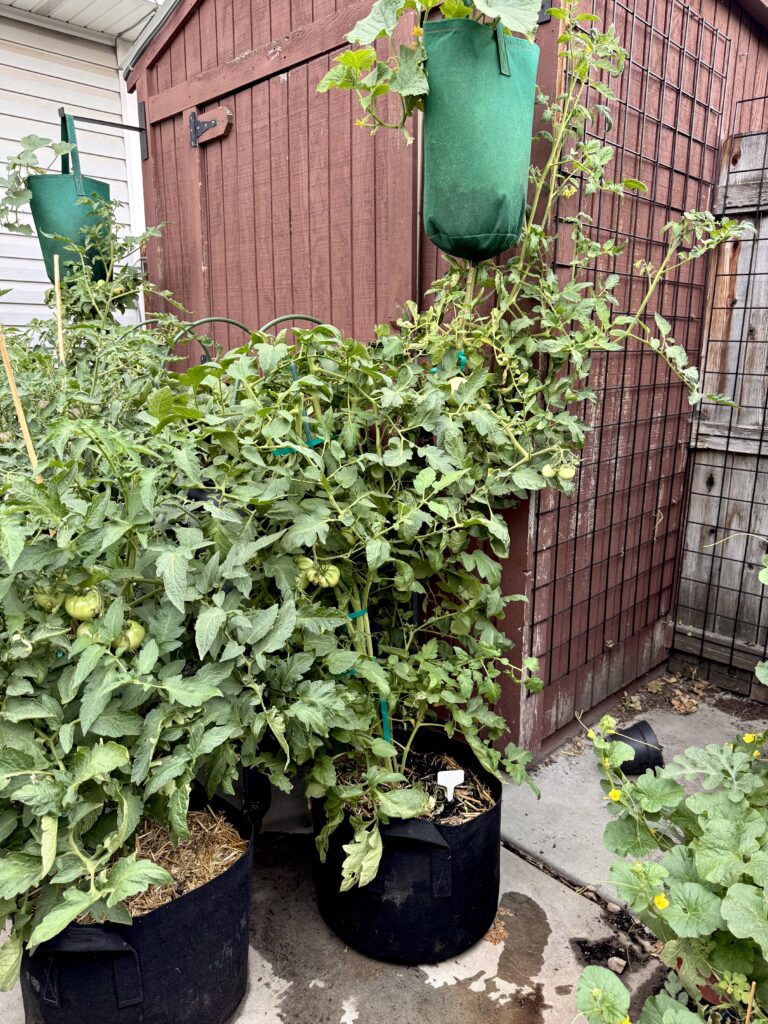
4. Deadhead Late in the Season (Applies to Only Indeterminate Varieties)
About a month before your first expected frost or the end of the growing season, you can deadhead your indeterminate tomato plants.
Deadheading means removing new flowers and small, unripe fruit so the plant focuses its energy on ripening the fruit already set. This can help speed up the harvest before colder weather arrives. You can even cut off the whole top of the tomato plant and any new growth.
Since determinate and dwarf tomatoes have a more fixed fruiting period, deadheading is generally less useful for them.
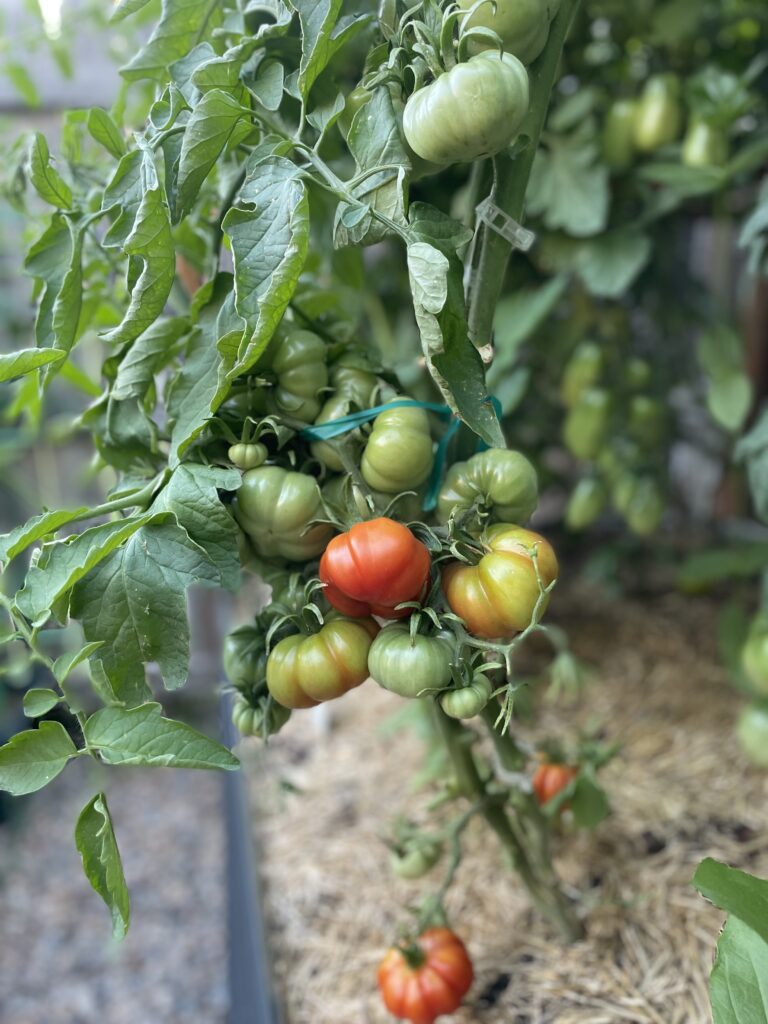
Quick Tips for Advanced Tomato Pruning
Once you’ve covered the basics of tomato pruning, you can start to tailor your technique to fit your setup. First things first: Your pruning approach should depend heavily on the type and strength of your trellis, as well as the overall health of the plant.
A Few Key Principles I Follow:
- Let the trellis be your guide.
If you have a strong support system, there’s no problem with letting your tomato plant get bushy. A sturdy trellis can handle the weight of a fuller plant without issues.
- Support comes from below.
A bushier tomato plant needs a strong root system to match. Before letting your plant grow out, make sure the roots are established and capable of supporting that extra mass.
- Use a modified pruning strategy for indeterminate varieties.
My go-to method is:- Prune suckers on the bottom third to half of the plant.
- Once the plant is vigorous and stable, allow the top section to grow more freely. This keeps airflow high and disease risk low near the base, while still producing plenty of fruit up top.
- Keep suckers, remove leaves.
If you want to allow a sucker to grow but still reduce excess foliage, you can:- Keep the sucker, which will eventually bear fruit
- Remove the lower horizontal branch nearby to improve airflow and reduce leaf crowding
Ultimately, there’s no one-size-fits-all answer. Advanced pruning means observing your plant, knowing your goals, and striking a balance between structure, productivity, and plant health.
Thanks for reading along, guys! If you enjoyed this blog post, check out my other gardening blog posts:
- How to Start a Garden on a Budget for Under $100
- Essential and Nice-to-Have Garden Products for Your Perfect Setup
- My Garden Setup: 3 Best Garden Containers for Every Gardener
- Understanding Garden Light and Shade: A Simple Guide
- How to Build a Homemade Trellis Using Cattle Panel
Follow me on social media for daily content and instructional videos about gardening!
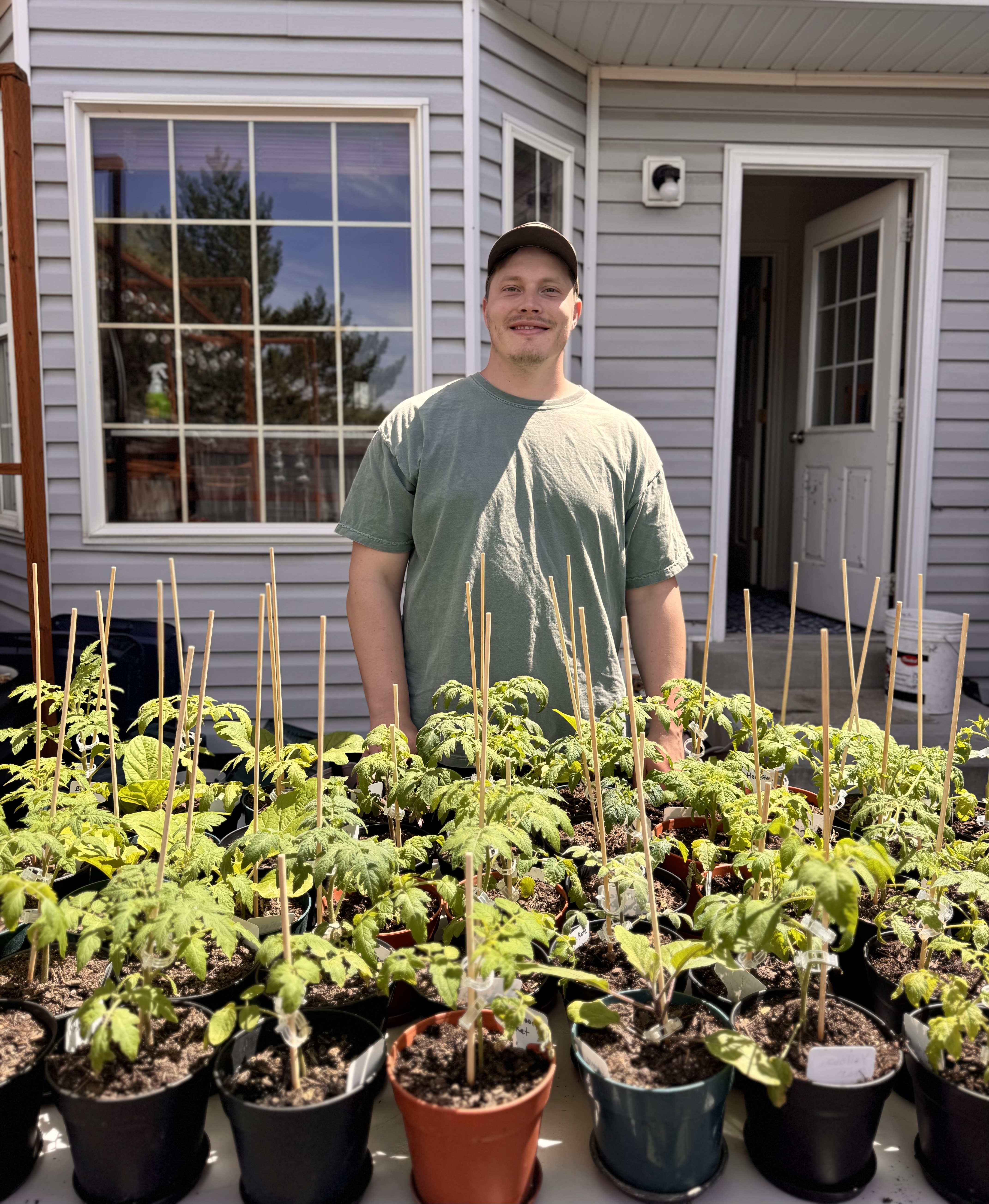




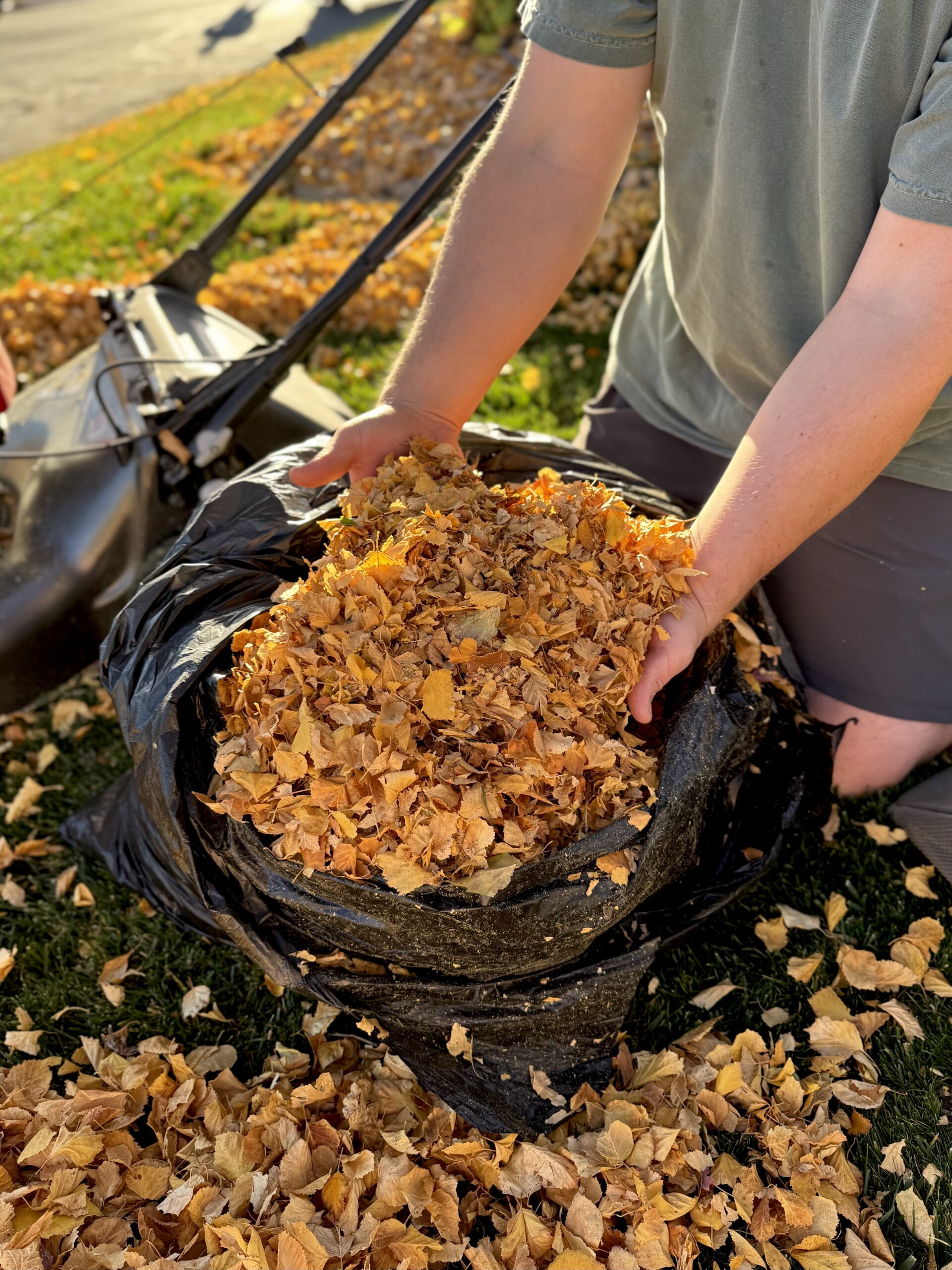
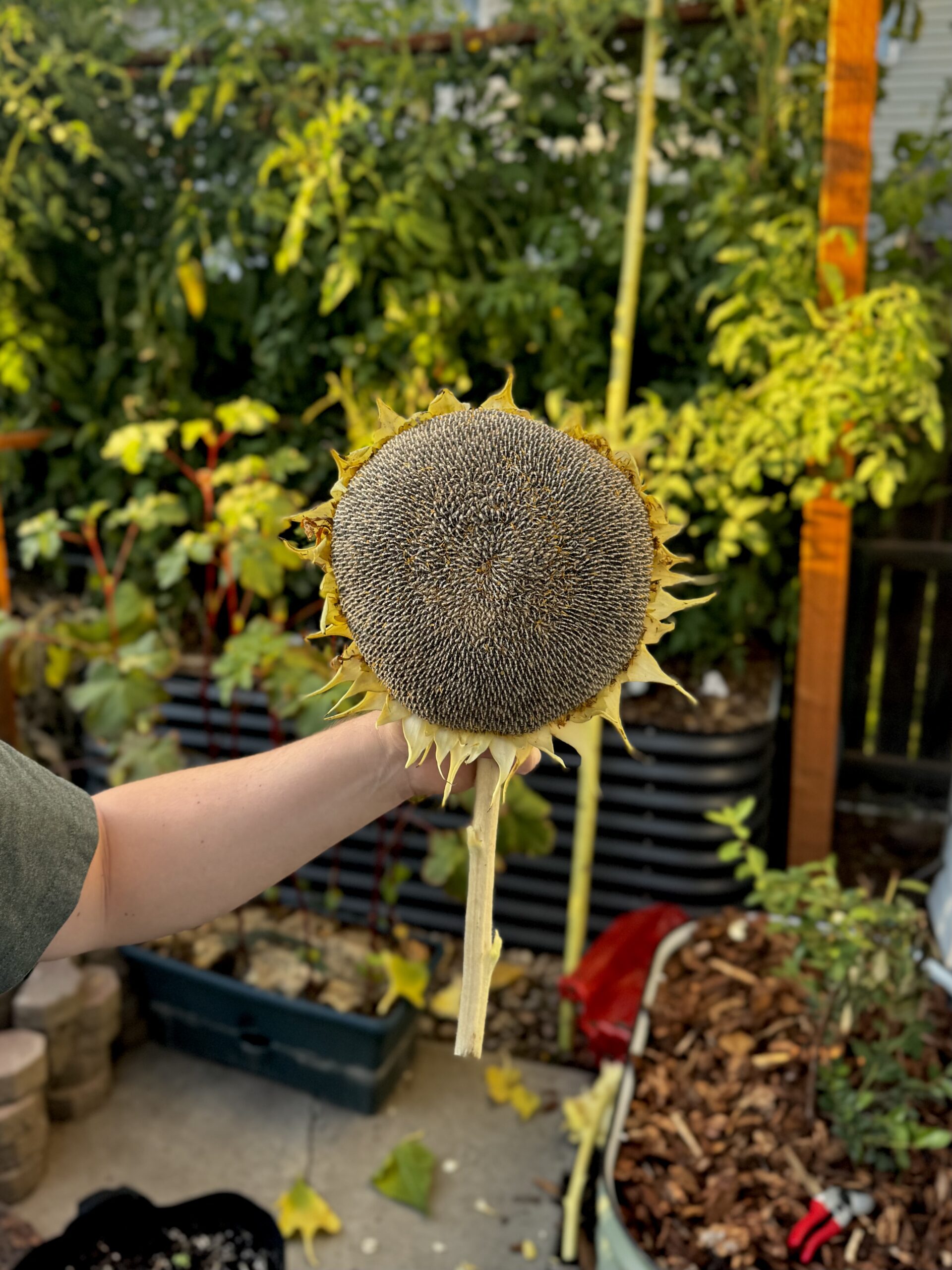
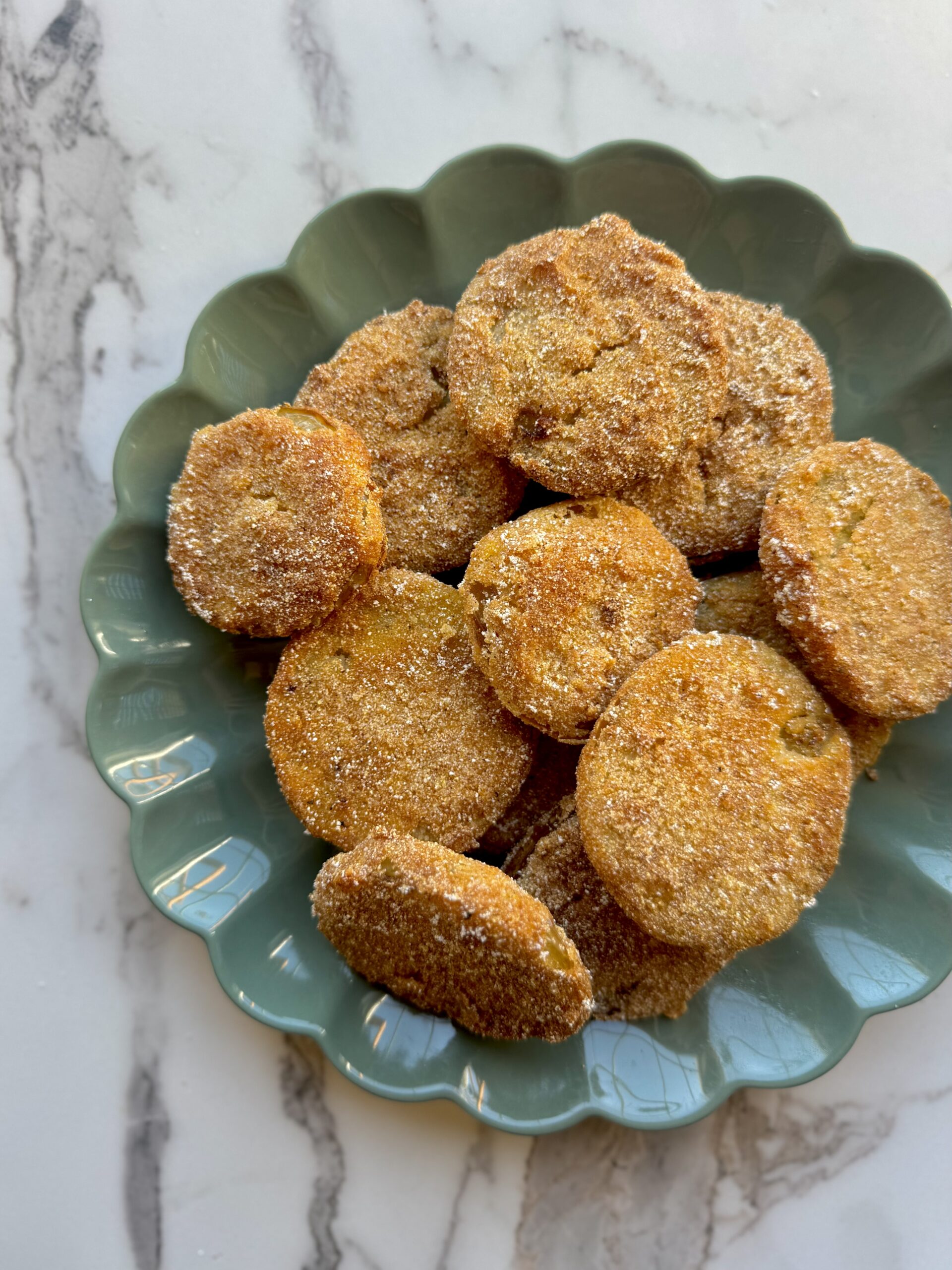
What to do if tomatoes plants got too dry? It has fruit but a lot (most) leaves are dried out! Any hope?
It is a “Paste tomatoe” (Roma)
This is so helpful! Thanks! I want to become a tomato growing master.
I got way more airflow and fewer disease issues after following this. Good point on treating determinates and dwarfs differently!